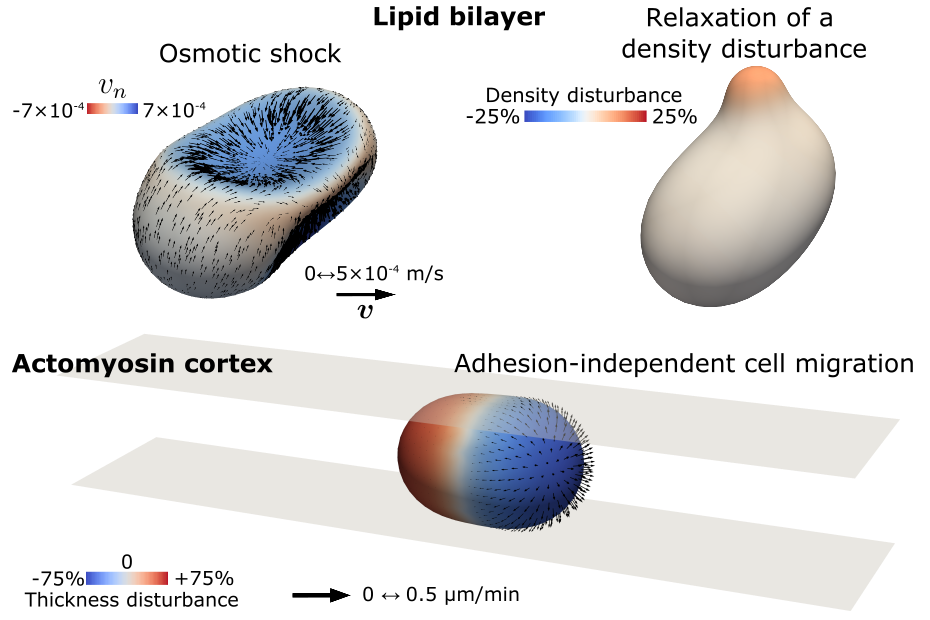Alejandro Torres-Sánchez, Daniel Millán, Marino Arroyo. Journal of Fluid Mechanics 872, 218-271 (2019).
Abstract
Fluid deformable surfaces are ubiquitous in cell and tissue biology, including lipid bilayers, the actomyosin cortex or epithelial cell sheets. These interfaces exhibit a complex interplay between elasticity, low Reynolds number interfacial hydrodynamics, chemistry and geometry, and govern important biological processes such as cellular traffic, division, migration or tissue morphogenesis. To address the modelling challenges posed by this class of problems, in which interfacial phenomena tightly interact with the shape and dynamics of the surface, we develop a general continuum mechanics and computational framework for fluid deformable surfaces. The dual solid–fluid nature of fluid deformable surfaces challenges classical Lagrangian or Eulerian descriptions of deforming bodies. Here, we extend the notion of arbitrarily Lagrangian–Eulerian (ALE) formulations, well-established for bulk media, to deforming surfaces. To systematically develop models for fluid deformable surfaces, which consistently treat all couplings between fields and geometry, we follow a nonlinear Onsager formalism according to which the dynamics minimizes a Rayleighian functional where dissipation, power input and energy release rate compete. Finally, we propose new computational methods, which build on Onsager’s formalism and our ALE formulation, to deal with the resulting stiff system of higher-order partial differential equations. We apply our theoretical and computational methodology to classical models for lipid bilayers and the cell cortex. The methods developed here allow us to formulate/simulate these models in their full three-dimensional generality, accounting for finite curvatures and finite shape changes.
